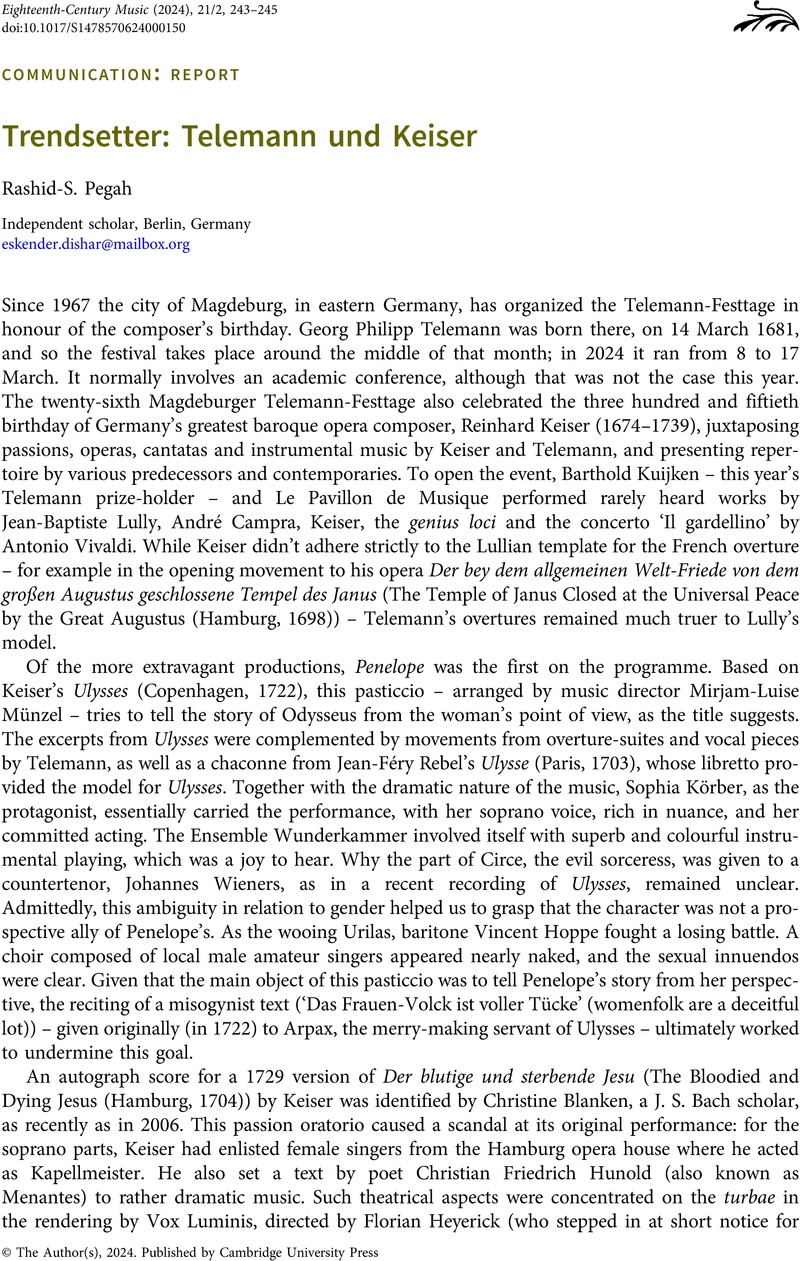No CrossRef data available.
Article contents
Trendsetter: Telemann und Keiser
Published online by Cambridge University Press: 23 September 2024
Abstract
An abstract is not available for this content so a preview has been provided. Please use the Get access link above for information on how to access this content.

Information
- Type
- Communication: Report
- Information
- Copyright
- Copyright © The Author(s), 2024. Published by Cambridge University Press


